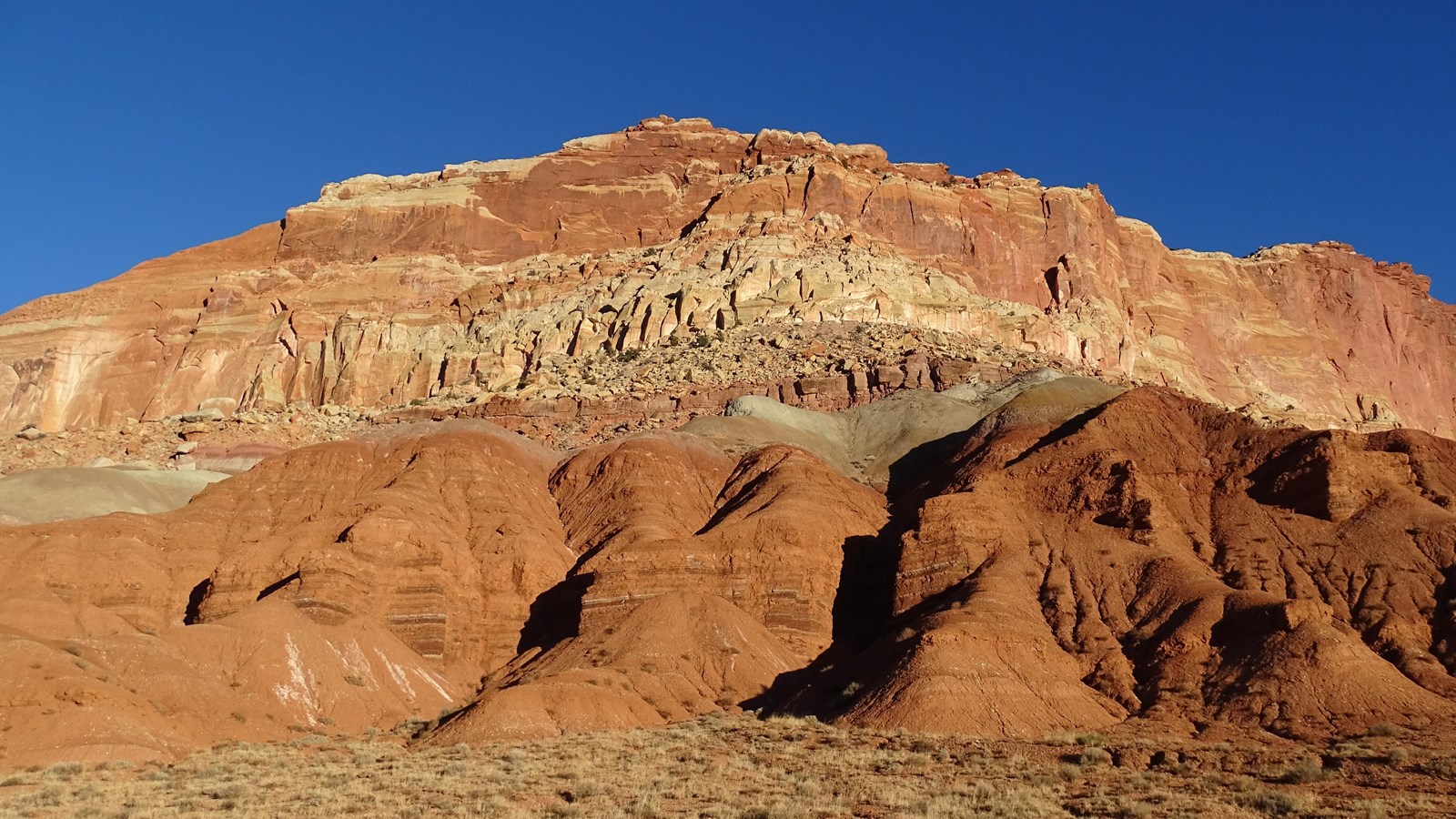Last updated: March 28, 2025
Place
Scenic Drive Stop 1

NPS / E. Van Ness
Quick Facts
Amenities
2 listed
Information Kiosk/Bulletin Board, Parking - Auto
The sedimentary rock layers around you are the entries from Earth’s diary. Each layer, or formation, tells a story from Earth’s past. View three entries in the cliff to the east: the Moenkopi Formation, the Chinle Formation, and the Wingate Sandstone. The Moenkopi Formation is the red-brown mudstone at the base of the cliffs. If you were able to visit 250 million years ago, you’d be standing near the equator, squishing your toes in the mud flats at the edge of an ocean. Maybe you’d see an ancient reptile swimming through a sluggish river that empties into the sea. Rippled mud flats have been preserved in stone and can be seen along the Scenic Drive. Look for these ripple rocks at Stop 7 and remember to leave these irreplaceable treasures where you find them.
The Chinle Formation is the greenish-gray layer that transitions to burgundy and red as it ascends to the base of the sheer cliffs. 215 million years ago, this layer was created by swamps and slow-moving rivers. Rising toward the sky, the sheer red cliffs of Wingate Sandstone are the remnants of a 200-million-year-old sand dune desert.
The Chinle Formation is the greenish-gray layer that transitions to burgundy and red as it ascends to the base of the sheer cliffs. 215 million years ago, this layer was created by swamps and slow-moving rivers. Rising toward the sky, the sheer red cliffs of Wingate Sandstone are the remnants of a 200-million-year-old sand dune desert.
